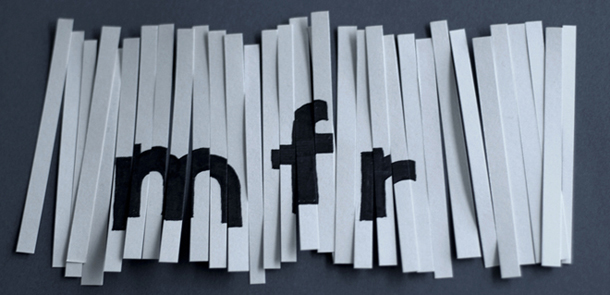The Radiohead Model, Chapter 2: If I Could Be Who You Wanted

*MP3: Radiohead - "Planet Telex"
*MP3: Radiohead - "Fake Plastic Trees"
*MP3: Radiohead - "My Iron Lung"
*MP3: Radiohead - "Street Spirit (Fade Out)"
In the mid '90s, a handful of British bands were plugging in their guitars and recording music that would eventually come to be known as Britpop. The sound was heavily ratcheted and distorted, and it seemed that coke and nostalgia were the main driving forces of the scene. The world was becoming aware of a second British invasion, but this seemed to be the darker, more cynical sequel—Luke battling Vader for the first time. Somebody had to make The Empire Strikes Back.
EMI released The Bends, the second of Radiohead's '90s album trilogy, in 1995. Pablo Honey had disappeared, but the My Iron Lung EP perked some ears. The title track, which would also appear on The Bends, swirled, raged, and yes, even bended more than anything the band had done. By the time recording sessions for The Bends came around, the band was on the verge of collapse and sick of songs they had been touring for three years, none of which they would ever play again (except “Creep”). With ideas and ambition flowing, the band convened with producer Andrew Leckie and engineer Nigel Godrich (more on him later) to record their second album.
The music of The Bends was unmistakably that of a rock band. Guitars thundered, descended, and soared on tracks like “The Bends,” “Black Star,” and “Just.” Jonny Greenwood was clearly now the lead guitarist, and Ed O'Brien first made himself known on “Street Spirit (Fade Out).” The Bends also marked the first forceful use of keyboard in the band, which many consider the gateway drug that encouraged Radiohead to move on to the harder stuff like synthesizers and the elicit use of programming (OK Computer, cough, Kid A).
[Some people tried to pin Radiohead and their second record to the Britpop renaissance. It didn't matter. They were about to change the game again anyway.]
Then there was that voice. Thom Yorke recorded the vocals to “Fake Plastic Trees” immediately after seeing Jeff Buckley in concert. Oscillating between wail and soul, Yorke's true tenor voice came to the fore. Experimental sounds sneaked in between the muscular guitars, time signatures went slightly awry, and an unsettling subtext began to emerge underneath the songs. The bends, after all, is a very dangerous condition.
This was also the true beginning of the Radiohead chrysalis i.e. Radiohead, Nigel Godrich, and visual artist Stanley Donwood, a university mate who became the band's artist-in-residence beginning with the rather challenging album images for The Bends. Godrich turned the knobs for only a few songs on the album, but his time would come. This album was well-received enough, mostly within the industry and by critics, if still a grower in the states (it peaked at number 88 on the Billboard charts). The band set out on another grueling world tour, which included a stint in 1995 as the opening act for R.E.M.
In the end, some people tried to pin Radiohead and their second record to the Britpop renaissance. It didn't matter. They were about to change the game again anyway.
Further Reading: The Radiohead Model, Chapter 1: Anyone Can Play Guitar
(Erik Martz/Ian Anderson)
Labels: Radiohead

3 Comments:
i listened to FPT on headphones today while i walked along the water in a park and even though i have heard it a thousand times, today it still felt infinitely new and true.
"Black Star" is beautiful. Appreciated reading this write-up on Radiohead's history and looking forward to more stories.
Have you ever toured Oxford using the A Guide to Radiohead's Oxford? Highly recommended.
The album that changed my life. 'Nuff said. :)
Post a Comment
<< Home